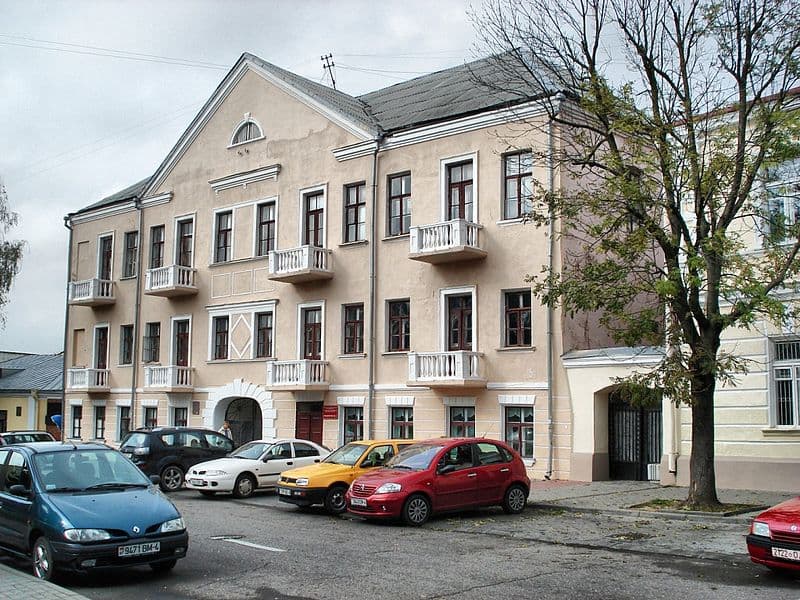Grodno. Masalsky House (5 Zamkovaya St.).
Landmark
Belarus, Grodno region, Grodno, Zamkovaya str., 5
Description
The ancient Masalsky Palace is located on Zamkovaya (Castle) Street in Grodno. The monument was erected in the 17th or 18th century. It belonged to various owners, including the Princes Masalsky. Then the palace belonged to Františk Yundil, the head of Grodno.
After the revolution, Belarusian organizations gathered in the building, and during the time of the Polish state in the 1920s, a Jewish school and a club of Jewish intellectuals worked here.
After the war, a trade and culinary school operated in the palace, and then a dormitory of the medical university was located. A few years ago, the monument was acquired by a private owner.
Categories
Historical
Architectural monument
Comments
Reviews to the Place
1Алег Дзьячкоу
26.02.2025
Grodno. Castle Street. The Masalsky House.
The Masalsky House is located in the historical center of Grodno on Zamkovaya Street (number 5). The building is a three-story stone building with a one-story extension attached to it. It has the status of historical and cultural value. It is considered one of the oldest stone buildings in Grodno.
The house was built during the time of the Grand Duchy of Lithuania in 1643, and according to other sources - in 1726. It was rebuilt during the Russian Empire in 1912. It was built as a palace complex in the 18th century, and included several nearby buildings. It was a U–shaped complex of buildings. The palace was two-storied, and the third was built at the beginning of the 20th century.
At first, the building belonged to local Jews Kaddish and Itska Abramovich. They sold the house to the great Lithuanian leader Alexander Gilyari Polubinsky. According to another version, Prince Radziwill's palace was first located here. In 1726, the building belonged to the mayor of Grodno, Michal Masalsky. In 1781, the palace was renamed by Prince Xavier Masalsky to Bishop Ignatius Masalsky of Vilna.
In 1794, the palace belonged to the mayor of Grodno, Francis Yundil. After the revolution, Belarusian organizations gathered in the building. During the time of the Polish state in the 1920s, a Jewish religious school and a club of Jewish intellectuals worked here.
After the Great Patriotic War, the palace was rebuilt. There was a trade and culinary school here, and then there was a medical university dormitory. A few years ago, the monument was acquired by a private owner who plans to open a hotel here.

